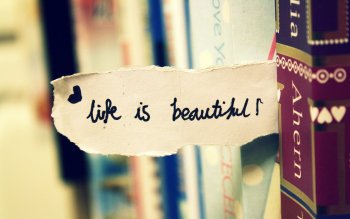Holi, also popularly known as the festival of colors marks the beginning of ceremonies specially in the Hindu calender as it is the first festival in the Hindu calendar. Holi 2013 falls on March 27, that is the full moon day of the month of Phalgun as per the Hindu calendar. However, the festival of Holi will surely continue to evolve this year as it has done over the past year… perhaps even more
The traditional symbols of Holi:
Holika Dahan(The Holi bonfire): The main emphasis of the festival is on the burning of the holy fire or Holika. The origin of the traditional lighting of Holi is attributed by some to the burning of demonesses like Holika, Holaka and Putana who represent evil, or to the burning of Madan according to others. Traditionally a bonfire on the day of Holi, marks the symbolic annihilation of Holika the demoness as described above. This is set fire to after ritualistic worship, and people make pradakshina of the bonfire. The next day this victory is celebrated as the day of Dulhendi.
Songs of Holi- Though the festival really begins many days in advance, with “Holi Milan” or Baithaks, musical soirees, where songs related to the festival, and the epic love story of Radha Krishna are sung; a special type of folk songs, known as “Hori,” are sung as well.
Dulhendi: This involves Smearing of coloured powder on each other, and throwing colour and scented water at each other using pichkaris (shaped like giant syringes or squirt guns). Principal ingredients of the celebration are Abeer and Gulal, in all possible colours. Next comes squirting of coloured water using pichkaris. Coloured water is prepared using Tesu flowers, which are first gathered from the trees, dried in the sun, and then ground up, and later mixed with water to produce orange-yellow coloured water. Another traditional Holi item now rarely seen is a red powder enclosed in globes of Lakh, which break instantly and cover the party with the powder.
Food preparations: Assemblage of Gujia, Papads, Kanji and various kinds of snack items including Malpuas, Mathri, Puran poli, and Dahi badas, which are served to Holi guests.
Drinks: The night of Holi, the baithak take turns churning bhang (cannabis) into intoxicating milk shakes and they make sweet laddoos mixed with bhang. Intoxicating bhang is consumed with a variety of mouth watering delicacies such as pakoras and thandai to enhance the mood of the festival. Vast quantities of liquor are consumed alongside ganja and bhang, which is sometimes added to foodstuffs.
Holika Dahan(The Holi bonfire): The main emphasis of the festival is on the burning of the holy fire or Holika. The origin of the traditional lighting of Holi is attributed by some to the burning of demonesses like Holika, Holaka and Putana who represent evil, or to the burning of Madan according to others. Traditionally a bonfire on the day of Holi, marks the symbolic annihilation of Holika the demoness as described above. This is set fire to after ritualistic worship, and people make pradakshina of the bonfire. The next day this victory is celebrated as the day of Dulhendi.
Songs of Holi- Though the festival really begins many days in advance, with “Holi Milan” or Baithaks, musical soirees, where songs related to the festival, and the epic love story of Radha Krishna are sung; a special type of folk songs, known as “Hori,” are sung as well.
Dulhendi: This involves Smearing of coloured powder on each other, and throwing colour and scented water at each other using pichkaris (shaped like giant syringes or squirt guns). Principal ingredients of the celebration are Abeer and Gulal, in all possible colours. Next comes squirting of coloured water using pichkaris. Coloured water is prepared using Tesu flowers, which are first gathered from the trees, dried in the sun, and then ground up, and later mixed with water to produce orange-yellow coloured water. Another traditional Holi item now rarely seen is a red powder enclosed in globes of Lakh, which break instantly and cover the party with the powder.
Food preparations: Assemblage of Gujia, Papads, Kanji and various kinds of snack items including Malpuas, Mathri, Puran poli, and Dahi badas, which are served to Holi guests.
Drinks: The night of Holi, the baithak take turns churning bhang (cannabis) into intoxicating milk shakes and they make sweet laddoos mixed with bhang. Intoxicating bhang is consumed with a variety of mouth watering delicacies such as pakoras and thandai to enhance the mood of the festival. Vast quantities of liquor are consumed alongside ganja and bhang, which is sometimes added to foodstuffs.
We have places like Mathura, Barsana, Pushkar, etc, where you feel the essence of this festival, performed with all the rituals. People from all over the country come down to these places and celebrate this grand festival with an ethnic touch
The New Colors of Holi
However in modern times, Festival of Holi has gone beyond the bonds of religion, geography or even celebration style.
The Holi Bashes
People wait all year for this festival and throw big bashes and parties, where a lot of people get together and groove to the music beats and get drenched in colours from head to toe.
Emerging Health Concerns towards Holi Celebrations
A visit to a doctor after the festival of colours is common in India. Diseases, specially of the skin and eye are bound to happen with the quality of colours that are now available in the market. It may be noted that chemical colours came into vogue as they were earlier thought to be harmless. Besides their being convenient and cost effective options as against the natural colours. These days manufacturers mix harmful chemicals in colours and play with the health of the consumers for the sake of profit. The chemicals added by them are so injurious that if unfortunately they enter a human body, they may cause fatal infections. These days most Holi colours sold in the market are oxidized metals or industrial dyes mixed with engine oil. These chemicals are known to cause serious harm to persons health.
Green colour is obtained from copper sulphate -which may cause allergies in eye or even temporary blindness.
Purple is obtained from chromium iodide – which may cause bronchial asthma or other forms of allergy.
Silver is obtained from aluminum bromide – a known carcinogenic.
Black is obtained from lead oxide – may cause renal failures or learning disability.
Red is obtained from mercury sulphite – may cause skin cancer or Minamata disease (mental retardation, paralysis, impaired vision…)
Shiny Colours are a result of powdered glass being added to the colours.
Green colour is obtained from copper sulphate -which may cause allergies in eye or even temporary blindness.
Purple is obtained from chromium iodide – which may cause bronchial asthma or other forms of allergy.
Silver is obtained from aluminum bromide – a known carcinogenic.
Black is obtained from lead oxide – may cause renal failures or learning disability.
Red is obtained from mercury sulphite – may cause skin cancer or Minamata disease (mental retardation, paralysis, impaired vision…)
Shiny Colours are a result of powdered glass being added to the colours.
Many water colours have an alkaline base capable of causing severe injuries. Colours in the form of pastes have toxic compounds mixed in a base of engine oil or other inferior quality oil, capable of causing skin allergy, temporary blindness. When washed, these colours containing toxic chemicals enter the river, thereby soil and water pollution.
Even the way we play Holi is becoming dangerous. Throwing water filled balloons has become rampant, which is very harmful. People should realise, what is fun for them could cause injury to the eyes and ears to the other person, specially when thrown from a distance and with force.
Natural, Organic & Home-Made Colors are coming back
In the early days when Holi celebrations weren’t as much commercialized, Holi colors were primarily prepared from the flowers of trees such as the Indian Coral Tree (parijat) and the Flame of the Forest (Tesu).These and several other blossoms provided the raw material from which the brilliant shades of Holi colors were made. Most of these trees also had medicinal properties and Holi colors prepared from them were actually beneficial to the skin.
Holi festival lovers will be glad to know that it is very much possible to make simple organic colors in one’s own kitchen. Here are some very simple recipes to make organic colors:
Yellow Color: 1) Mix turmeric (haldi) 2) Boil flowers in water
Yellow liquid color: Soak peels of pomegranate (Anar) overnight.
Deep Pink Color: Slice a beetroot and soak in water
Orange – Red Paste, Henna leaves (mehndi) can be dried, powdered and mixed with water.
Yellow Color: 1) Mix turmeric (haldi) 2) Boil flowers in water
Yellow liquid color: Soak peels of pomegranate (Anar) overnight.
Deep Pink Color: Slice a beetroot and soak in water
Orange – Red Paste, Henna leaves (mehndi) can be dried, powdered and mixed with water.
The colorless side of Holi
While one side of Holi is full of color and fun, other other side is not so merry. The spirit of Holi is sometimes taken too far, to an extent it starts encrouching others’ safety. Women’s and children’s safety is one of those. While I could not find any open statistics to support crime against women and children in the wake of spirit of Holi, I can definitely share ample evidence of careness of people during the festvities which they openly exhibit on the roads. In New Delhi itself, the number of accidents and drunken driving incidents is increasing multifold:
A total of 8,526 prosecutions were done by Traffic Police during 2012 Holi which included 961 for drunken driving, 865 for triple riding, 3,381 for not wearing helmet by drivers and pillion riders and 378 for not using seat belt amongst others.
In eight days, a total 1,991 prosecutions were done for drunken driving. Action against drunken driving included of 384 cars and 1,009 two wheelers in 8 days.
While 10 persons were killed in 2000, the figure rose to 19 in 2001 but came down 11 in 2002 and 10 in 2003. In 2004, it rose to 16 only to come down the next year.
The year 2006 saw the highest fatalities at 22 while in 2007 and 2009 the figure was 17 each. In 2008, it was 13 while it was 15 in 2010 and 13 last year.
A total of 8,526 prosecutions were done by Traffic Police during 2012 Holi which included 961 for drunken driving, 865 for triple riding, 3,381 for not wearing helmet by drivers and pillion riders and 378 for not using seat belt amongst others.
In eight days, a total 1,991 prosecutions were done for drunken driving. Action against drunken driving included of 384 cars and 1,009 two wheelers in 8 days.
While 10 persons were killed in 2000, the figure rose to 19 in 2001 but came down 11 in 2002 and 10 in 2003. In 2004, it rose to 16 only to come down the next year.
The year 2006 saw the highest fatalities at 22 while in 2007 and 2009 the figure was 17 each. In 2008, it was 13 while it was 15 in 2010 and 13 last year.










No comments:
Post a Comment